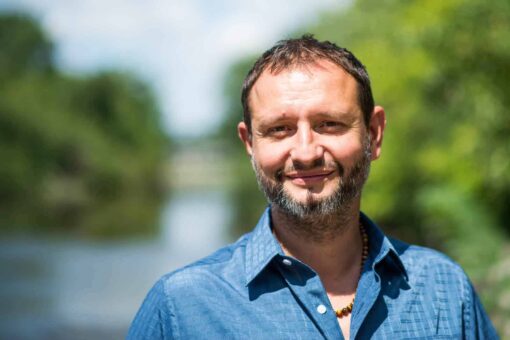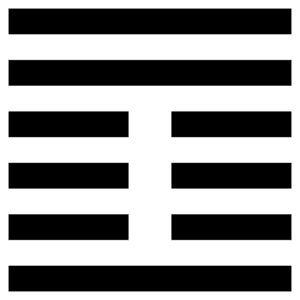January 8, 2021
My personal physician in Thun recently complained about the many patients he sees who are perfectly healthy but come to him doubled up in pain and complaining about their symptoms. “They are crazy,” he said throwing up his hands in frustration. “Perfectly healthy people, but not able to live with their health! On the other side I have patients who feel as healthy as can be, and I have to tell them they have six months to live because of a recently discovered lymphoma. I’d like to send the healthy ones to the moon! They’re nuts!”
His complaint reminded me of the opening pages in Jung’s 1936 Terry Lectures at Yale University entitled “Psychology and Religion.” There he is telling the audience about the power that a neurosis can have over patients’ lives. For instance, he says, a man imagines he has cancer, but there is no physical evidence of cancer in his body. He then feels at a complete loss and becomes convinced that he is crazy. So he consults Jung, a psychiatrist. “Help me, doctor. I think I’m dying from cancer but this is nonsense, yet I can’t stop it!” What does the psychiatrist Jung do with this imaginary cancer? “I told him that it would be better to take his obsession seriously instead of reviling it as pathological nonsense. But to take it seriously would mean acknowledging it as a sort of diagnostic statement of the fact that, in a psyche which really existed, trouble had arisen in the form of a cancerous growth. ‘But,’ he will surely ask, ‘what could that growth be?’ And I shall answer: ‘I do not know,’ as indeed I do not. Although… it is surely a compensatory or complementary unconscious formation, nothing is yet known about its specific nature or about its content. It is a spontaneous manifestation of the unconscious, based on contents which are not to be found in consciousness… I then inform him… that his dreams will provide us with all the necessary information. We will take them as if they issued from an intelligent, purposive, and, as it were, personal source…. The symptom is like the shoot above ground, yet the main plant is an extended rhizome underground. The rhizome represents the content of a neurosis; it is the matrix of complexes, of symptoms, and of dreams. We have every reason to believe that dreams mirror exactly the underground processes of the psyche. And if we get there, we literally get at the ‘roots’ of the disease.”
The delusional idea of a cancerous growth in a healthy body, then, is a symbol, which can provide a point of entry into the unconscious realm of complexes, processes, and hidden conflicts. And just as a physical cancer will suck the life out of a living organism if it is allowed to grow and remains unchecked, a psychic cancer too will drain a person’s life of psychic energy and produce a state of hopeless stagnation and eventually even psychic death. Symbols have the power to do just that. They collect, hold, and channel psychic energy, for good or ill.
In one sense, this psychic symptom is a metaphor, in that it is borrowing the language of physicality (cancer, illness) and applying it to the psychic domain. This transfer of language from one domain to another is what poets do when they employ metaphors. The psyche is involuntarily acting in a poetic fashion by stating, “I am sick with cancer,” when the person, were he more conscious of his psychic suffering, would say, “I am in profound despair,” or “I have no energy,” or “I am in hopeless conflict and it’s eating me alive!” But this patient cannot say that. He can only say: “I am convinced I have cancer, and I can’t get this irrational idea out of my head!” He is an unwilling poet. He has not chosen this symbol consciously or voluntarily; it has chosen him. He is unfree to dismiss it and unable to interpret it. So he goes to the analyst, and he confesses that he is possessed by a symbol and doesn’t know what it means. Understandably, he is humiliated by the stupid symptom and its unyielding grip on him. Jung says that such morbidity is usually shameful, and the patient is embarrassed to admit this weakness. He is in the grip of a complex, and this psychic factor – powerful, autonomous, and unconscious – is symbolized as a cancer. It must be analyzed and made conscious so that the very real suffering caused by the symptom-symbol can be transformed into psychic suffering. Perhaps other psychic resources can thus also be constellated, which will assist in bringing about the free flow of energy (libido) into more life enhancing tasks and goals.
What is a symbol?
As Jung understands and employs the term symbol, it is different from a metaphor in that what it is communicating or presenting to consciousness is utterly untranslatable into any other terms, at least for the time being. Symbols are opaque and often bring thinking to a standstill. Metaphors are transparent and must be so if they are to do their job. They help us think in creative ways “outside the box.” If a poet writes, for instance, that a bridge leaps (“vaulting the sea”) and addresses it as a “harp” and an “altar,” as the American poet Hart Crane does in his famous poem, “To Brooklyn Bridge,” the reader can with diligence puzzle out a sense of what the poet means to communicate. We know what a bridge is, and we know what “vaulting” signifies and what “altars” and “harps” are, and we can think along with the poet and appreciate what he is getting at with these metaphors. The image all refer to sense data in the material world, and reflection will yield interesting ideas about how they belong together and what this unique concatenation signifies. But if a patient says, “I am convinced that that I have a cancerous tumor in my body but there is no evidence, what does this mean?” the psychotherapist must confess, with Jung, “I have no idea what it means, but we can explore the image. By looking at your life, your history, your dreams and fantasies, we may be able to discover something that at this moment is locked out of consciousness and is analogous to a cancer.” It is an important difference. The link between signifier and signified is totally opaque in the case of symbols; with metaphors, on the contrary, this link is evident even if often very complicated and at first glance puzzling.
(more…)






